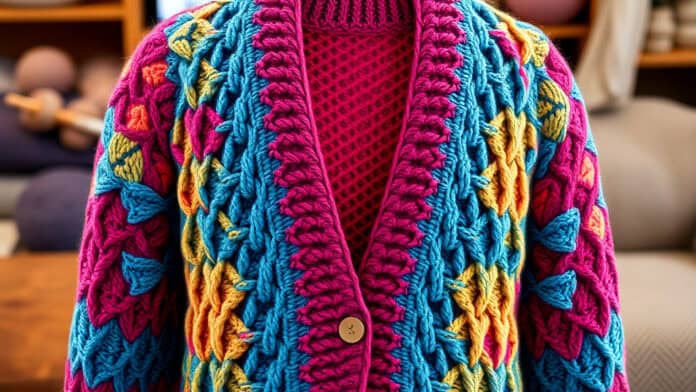Entrelac Cardigan Knitting Patterns
Entrelac knitting is a fascinating technique that creates a textured and woven appearance through interconnected blocks. If you’re looking to make a stylish cardigan, you’re in the right place. This method captures attention with its intricate designs, bringing a unique flair to your wardrobe.
In this guide, you’ll explore various entrelac cardigan knitting patterns that cater to all skill levels. From the basic entrelac to more complex variations like the honeycomb and diamond patterns, there’s something for everyone. With a few essential materials and clear instructions, you’ll be knitting beautiful cardigans in no time. Ready to get started? Grab your yarn and needles!
Key Takeaways
- Entrelac knitting creates a unique, textured look using interconnected blocks.
- Explore various patterns like basic, diagonal, basketweave, honeycomb, and diamond.
- Essential materials include yarn, circular needles, stitch markers, and a tapestry needle.
- Familiarize yourself with common abbreviations and instructions for accurate pattern reading.
- Follow simple steps: cast on, knit triangles, pick up stitches, repeat, and sew together.
What Is Entrelac Knitting?
Entrelac knitting showcases a stunning technique that weaves small blocks together, forming an eye-catching fabric. This style stands out because of its unique diagonal construction. Each block connects to the next, creating a woven texture that is both intricate and appealing.
The key to successful entrelac projects lies in mastering the technique. You can start with basic patterns, which serve as a solid foundation. Once you feel comfortable, you can experiment with various designs, such as diagonal or honeycomb patterns. Each offers a different visual flair, enhancing your knitting repertoire.
When working on Entrelac Cardigan Knitting Patterns, keep a few important steps in mind:
- Choose your yarn wisely; fibers like wool or cotton yield great results.
- Use circular needles for easier handling of stitches.
- Create tension by adjusting your needle size to suit your yarn weight.
- Pay attention to your stitches; accuracy is essential for a polished finish.
- Don’t shy away from trying new patterns to keep your projects fresh.
- Take breaks to prevent fatigue; knitting should be enjoyable.
- Celebrate your progress, no matter how small the steps may seem.
Embrace the challenge of entrelac knitting, and enjoy the journey of bringing unique patterns to life.
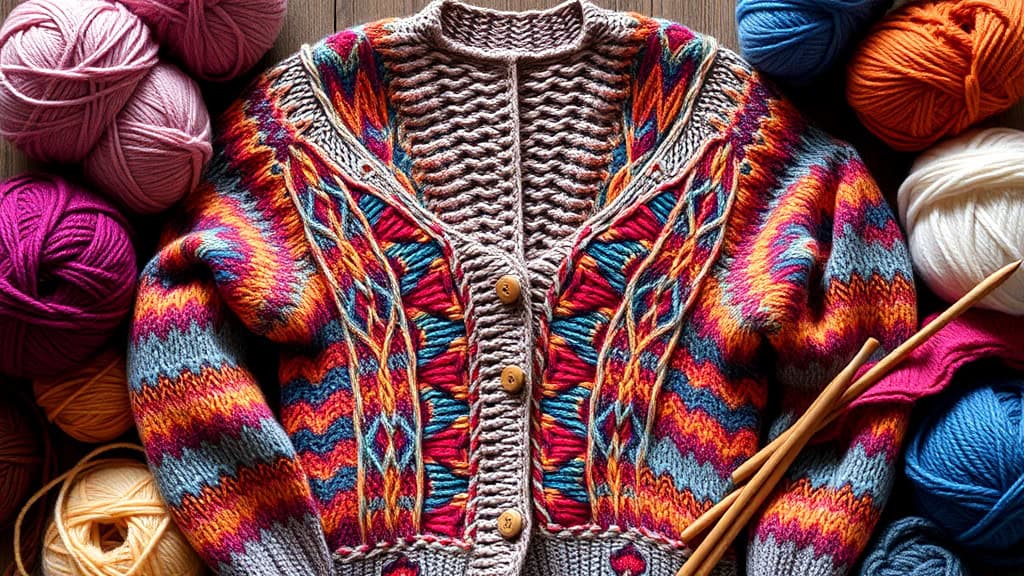
What Are The Different Types Of Entrelac Knitting Patterns?
Exploring the various types of entrelac knitting patterns reveals a creative journey. Each pattern showcases unique styles and techniques, ideal for personalizing your projects.
The basic entrelac pattern is a great starting point. It consists of simple squares or rectangles stacked in tiers. Beginners often find this approach easy to grasp.
Next, the diagonal entrelac pattern introduces a slant to the blocks, enhancing visual interest. This pattern requires precise attention to knitting direction.
For a woven appearance, try the basketweave entrelac pattern. Here, blocks alternate direction, producing a lovely crisscross effect.
The honeycomb entrelac pattern features hexagonal blocks, creating an intricate, interlocking design reminiscent of honeycombs.
Lastly, the diamond entrelac pattern offers a more angular look with diamond-shaped blocks. This design adds sophistication to any project, including entrelac cardigan knitting patterns.
Whether you are a novice or an experienced knitter, these patterns provide endless possibilities. Experimenting with different styles will keep your knitting exciting and fresh. Enjoy the process as you create stunning pieces that showcase your skills and creativity.
| Pattern Type | Key Characteristics | Best For | Example Project |
|---|---|---|---|
| Basic | Simple squares/rectangles | Beginners | Basic scarf |
| Diagonal | Slanted blocks | Intermediate | Shawl |
| Basketweave | Crisscross effect | All skill levels | Blanket |
| Honeycomb | Hexagonal blocks | Advanced | Sweater |
| Diamond | Angular design | Experienced | Entrelac cardigan |
Basic Entrelac Pattern
Creating a basic entrelac pattern is a delightful way to start your journey into this captivating knitting technique. The process begins with establishing a foundation of small squares or rectangles. These blocks are knitted in tiers, allowing you to build a textured fabric that captures attention.
Start by casting on stitches for your base triangles. Next, pick up stitches along the edges to create your first tier of blocks. Each block is worked individually, allowing for easy adjustments. As you progress, you will notice how the interconnected nature of the blocks forms a beautiful woven effect.
To keep things engaging, try alternating colors for each tier. This adds depth and visual interest to your piece. If you’re using Entrelac Cardigan Knitting Patterns, incorporating this basic pattern will provide a solid foundation for more complex designs later on.
Stay focused on your stitch counts, as accuracy is key. Mistakes can lead to uneven blocks, which can be frustrating.
As you become more comfortable with the basics, you can explore variations like diagonal or basketweave patterns. Each offers a unique twist while enhancing your skills. Enjoy the rhythmic flow of knitting entrelac and watch your fabric come to life!
Diagonal Entrelac Pattern
The diagonal version of the entrelac technique offers a refreshing twist on traditional designs. This pattern involves knitting blocks at an angle, creating a lively and dynamic appearance. The diagonal layout enhances visual interest, drawing the eye across the fabric.
When working with a diagonal entrelac pattern, accuracy is paramount. Maintaining consistent stitch counts for each tier is essential for a neat finish. Any small error can result in misaligned blocks, detracting from the overall effect.
Consider using contrasting colors for the diagonal blocks. This can enhance the zigzag effect, making each tier pop. Experimenting with different yarns can also lead to exciting results. A softer yarn can give a cozy feel, while a sturdy wool might emphasize the structure.
For your Entrelac Cardigan Knitting Patterns, start with a simple design before tackling more complex variations. Practice makes perfect, and soon you’ll find joy in creating intricate patterns effortlessly.
Don’t hesitate to make adjustments as you knit. Each project can be unique; embrace your creative side. As you knit, enjoy the process and watch your fabric transform into something beautiful. Happy knitting!
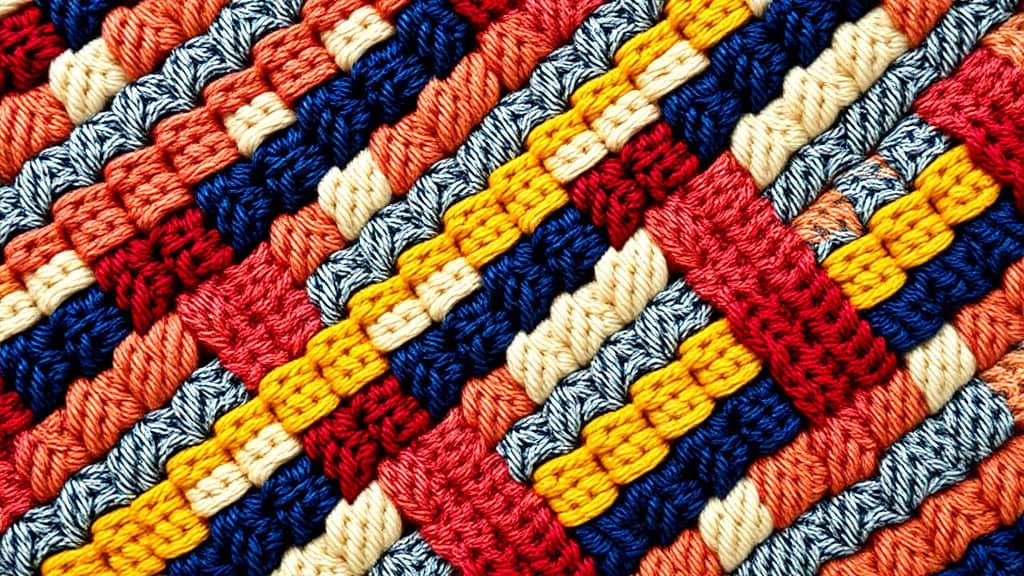
Basketweave Entrelac Pattern
The basketweave design in entrelac knitting creates a stunning visual effect. It mimics the look of woven baskets by alternating the direction of blocks. This technique enhances the texture and depth of your project.
When working on Entrelac Cardigan Knitting Patterns, consider using two or more colors. This can amplify the basketweave effect, making your cardigan truly stand out. A mix of light and dark shades can create a beautiful contrast, drawing the eye to the intricate design.
To achieve a successful basketweave pattern, focus on maintaining even tension throughout your knitting. Uneven tension can distort the blocks and ruin the overall look. Practicing your technique on a smaller swatch can help you master this crucial aspect.
Don’t shy away from experimenting with different yarn weights. A thicker yarn can add bulk and warmth, while a lighter yarn can create a delicate, airy feel.
As you incorporate the basketweave entrelac pattern into your cardigans, remember to enjoy each step of the process. Creating something unique and beautiful should be your primary goal, allowing your creativity to shine.
| Pattern Type | Color Variation | Difficulty Level | Recommended Yarn |
|---|---|---|---|
| Basic | Single Color | Easy | Worsted Weight |
| Diagonal | Contrasting Colors | Medium | DK Weight |
| Basketweave | Mixed Shades | Medium | Bulky Weight |
| Honeycomb | Gradient | Hard | Sport Weight |
| Diamond | Solid Color | Medium | Fingering Weight |
Honeycomb Entrelac Pattern
The structure of the honeycomb pattern showcases hexagonal blocks that interlock beautifully. This design creates a stunning visual effect, reminiscent of actual honeycomb. It’s a favorite among knitters looking to add intricate detail to their projects.
When selecting Entrelac Cardigan Knitting Patterns with this method, consider the following tips:
- Choose a yarn that enhances the structure, such as wool or cotton.
- Use circular needles for comfortable transitions between rows.
- Experiment with different colors for a striking contrast or gradient effect.
- Pay attention to gauge; the honeycomb pattern may require adjustments for sizing.
- Keep stitch markers handy to track your progress easily.
- Block your finished piece to make the pattern pop and improve drape.
- For beginners, practice the basic entrelac technique first to build confidence.
- Don’t hesitate to refer to video tutorials for visual guidance.
With its unique texture and depth, the honeycomb entrelac pattern transforms ordinary projects into stunning works of art. Each stitch interlocks perfectly, creating a fabric that’s both durable and visually appealing. Embrace the challenge and enjoy the satisfaction of mastering this beautiful technique.
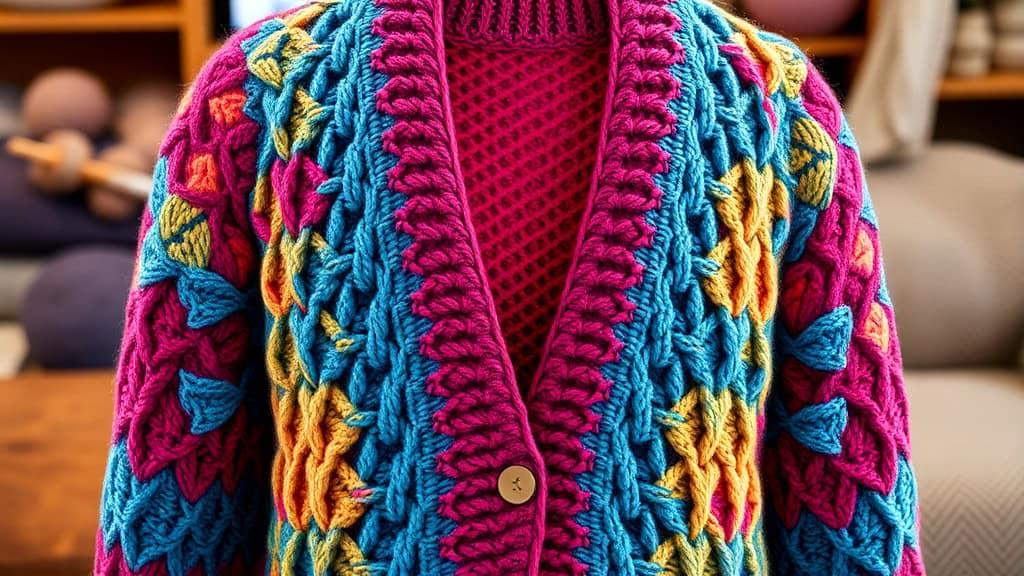
Diamond Entrelac Pattern
The design featuring diamond shapes offers a striking visual appeal in entrelac knitting. This pattern stands out with its sharp angles and sophisticated look, making it a favorite among advanced knitters. By using color variations, you can create a stunning contrast that enhances the diamond effect.
When working on Entrelac Cardigan Knitting Patterns, attention to detail is crucial. Each diamond block requires precision, ensuring that the transitions between colors and stitches flow smoothly. A well-executed diamond entrelac pattern can transform a simple cardigan into a statement piece.
Experimenting with yarn weights can significantly change the end result. Lighter yarns create a delicate drape, while thicker options give a more structured feel. Choose colors that complement each other to accentuate the diamond shapes, adding depth to your project.
As you knit, it can help to use stitch markers to keep track of your progress. This way, you can easily identify where to make your next move. Don’t hesitate to try different combinations of yarn and colors to make each piece uniquely yours.
Remember, practice makes perfect. Knitting the diamond pattern may seem daunting at first, but with patience, you’ll master it. Enjoy the process and the creative journey it offers.
What Materials Do You Need For Entrelac Knitting?
Gathering the right materials is crucial for successful entrelac knitting. You’ll need a selection of yarn, preferably wool or cotton for their elasticity and drape. The weight of the yarn significantly affects the finished product, so consider experimenting with different weights to see what suits your style best.
Circular knitting needles are essential for this technique. They allow for smooth transitions between blocks and accommodate the stitches comfortably. The size of the needles generally depends on the yarn weight you’re using; check the yarn label for recommendations.
Don’t forget to grab some stitch markers. These handy tools help track your progress and keep you organized as you navigate through the various tiers of blocks. A tapestry needle is also necessary for weaving in those pesky ends once your project is complete.
Lastly, keep a pair of scissors handy for snipping yarn and a measuring tape for ensuring your piece meets the desired dimensions.
| Material | Description | Purpose | Recommended Type |
|---|---|---|---|
| Yarn | Wool or cotton | For creating the fabric | Worsted or DK weight |
| Circular Needles | Flexible needles | To accommodate the stitch count | Size according to yarn |
| Stitch Markers | Small clips or rings | To mark row transitions | Any lightweight option |
| Tapestry Needle | Blunt-ended needle | To weave in ends | Standard size |
| Scissors | Sharp cutting tool | For trimming yarn | Any sharp pair |
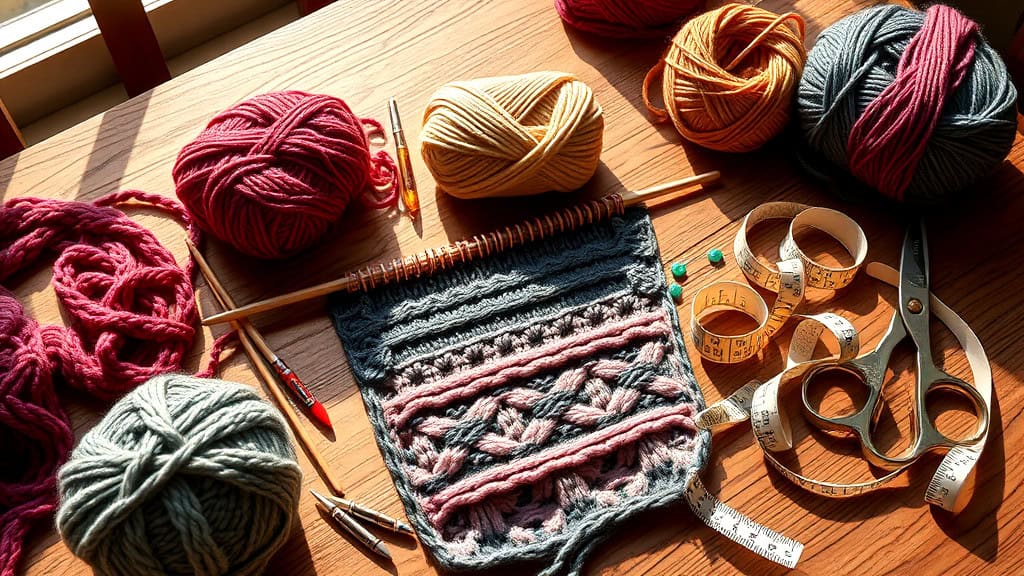
How To Read An Entrelac Knitting Pattern?
Reading an entrelac knitting pattern requires a keen eye for detail. Start by getting accustomed to common abbreviations like K, P, and YO. These symbols are your roadmap through the pattern.
Next, focus on the instructions. Each step is usually broken into sections, often including repeats. Pay close attention to stitch counts, as they are crucial for maintaining the structure.
When you see a new tier or block, take a moment to visualize how the stitches connect. Each block in Entrelac Cardigan Knitting Patterns is built upon the previous one, creating a flowing design.
Take note of any special techniques mentioned, like picking up stitches along edges or working back and forth. These are key to achieving the desired look.
Be prepared to refer back to earlier sections. Many patterns include a guide for understanding the layout and sequence.
Don’t forget to check your gauge. This ensures your final piece matches the pattern’s intended size. Use stitch markers to track your progress. They can help you avoid mistakes, especially in the more intricate sections.
Lastly, keep a sense of humor. Mistakes happen! Just treat them as learning experiences. Happy knitting!
Understanding The Abbreviations
Getting a grip on common abbreviations can greatly enhance your experience with Entrelac Cardigan Knitting Patterns. Here’s a quick rundown of essential terms you’ll encounter:
- K – This stands for knit, the foundation of most patterns.
- P – Short for purl, another fundamental stitch that creates texture.
- YO – This means yarn over, adding an extra stitch for design or increases.
- SSK – Stands for slip, slip, knit. It creates a left-leaning decrease.
- K2tog – Knit two together, a right-leaning decrease, crucial for shaping.
- BOM – Stands for bind off, which finishes your project securely.
- MC – Main color, indicating the primary yarn color used.
- CC – Contrast color, used for accents or design features.
Recognizing these abbreviations allows you to navigate patterns with confidence. Each abbreviation plays a role in the overall design, influencing texture and structure.
When reading Entrelac Cardigan Knitting Patterns, pay attention to how these abbreviations interconnect. They guide you through the steps, ensuring that your knitting flows smoothly. By mastering these terms, your crafting journey will be much more enjoyable and efficient.
Reading The Instructions
Grasping the instructions is crucial for knitting success. Begin by carefully studying the Entrelac Cardigan Knitting Patterns and noting any special instructions or techniques. Skim through the entire pattern before starting to understand the flow. This overview will help you anticipate any challenges.
Next, break the instructions into manageable parts. Tackle one section at a time. If the pattern includes multiple repeats, jot them in a separate notebook. This way, you can easily track your progress.
Pay close attention to stitch counts and shaping details. These nuances can significantly alter the final appearance of your cardigan. When encountering unfamiliar terms or abbreviations, don’t hesitate to look them up. Many resources are available, from online glossaries to knitting communities where you can ask questions.
As you knit, refer back to the instructions regularly. If something doesn’t look right, check the pattern to see where you might have strayed. Remember, even seasoned knitters make mistakes. Instead of getting frustrated, consider it a learning moment.
Lastly, keep your pattern handy while working. This ensures you can quickly reference it and maintain momentum in your project. Happy knitting!
What Are The Steps To Knit An Entrelac Cardigan?
To successfully create an Entrelac Cardigan, follow these steps.
Start by casting on the right number of stitches for your size. Use a flexible method to ensure ease when working the first row.
Next, focus on knitting the base triangles. This step builds the building blocks of your cardigan. Ensure they are uniform in size, as this will affect the overall appearance.
After completing the triangles, pick up stitches along the edges. This forms your first tier of blocks. Accuracy here is key for a clean finish.
Then, knit the side triangles. These add structure to the edges. Pay attention to how these interact with the base triangles to maintain shape.
Continue the process, repeating the tiers until you reach the desired length. This is where your personal style shines. You can play with colors and yarn textures.
Once the body is complete, it’s time to knit the sleeves. Follow your pattern closely, incorporating entrelac blocks if your design calls for them.
Finally, sew the pieces together. Ensure all seams are secure and neat for a polished look. Celebrate your creation with a fitting, cozy wear. Enjoy your Entrelac Cardigan Knitting Patterns journey!
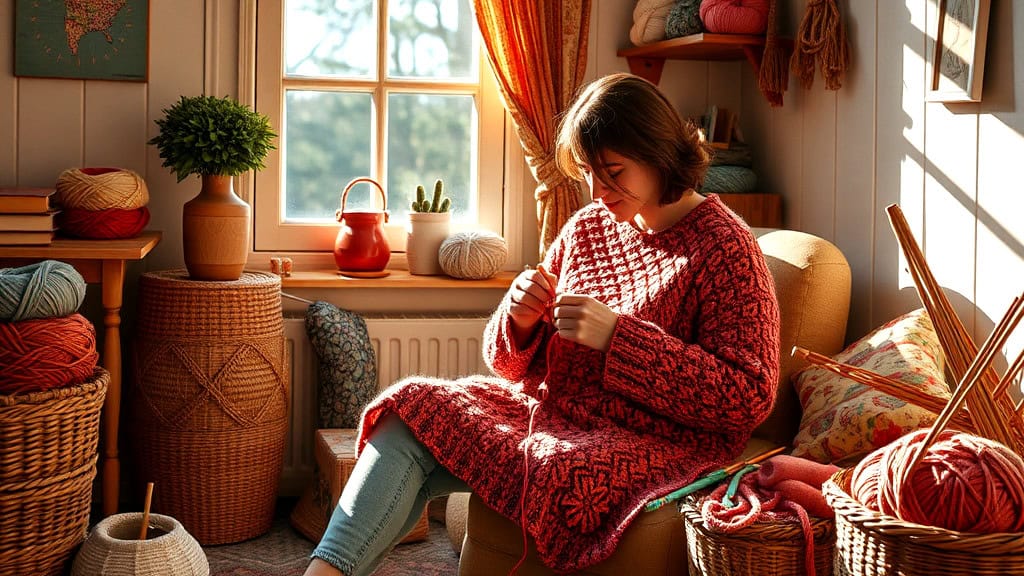
Cast On Stitches
To begin the knitting process, ensure you know how to cast on stitches correctly. This foundational step sets the tone for your entire project. For Entrelac Cardigan Knitting Patterns, casting on the right number of stitches is crucial. You may prefer the long-tail cast-on method for its stretchiness, which works well with entrelac designs.
Once you cast on, check that your stitches are even. An uneven cast-on can lead to tension issues later. After casting on, make sure to count your stitches to confirm you have the correct amount. This will help avoid frustration as you progress.
As you start working the base triangles, remember that the tension should remain consistent. This is essential for achieving a beautiful, balanced fabric. Keep your yarn at a comfortable tension to prevent puckering or loosening.
If you find your cast-on method challenging, practice it separately before starting your cardigan. Mastery here can save you time and headaches later on.
Table: Cast On Stitches for Entrelac Cardigan Patterns
| Method | Suitable Yarn Type | Recommended Stitches | Notes |
|---|---|---|---|
| Long-Tail Cast-On | Wool or Cotton | 50-100 | Flexible and stretchy. |
| Cable Cast-On | Bulky Yarn | 30-80 | Firm edges, good for structure. |
| Knitted Cast-On | Any Yarn | 40-90 | Simple and effective. |
| Purl Cast-On | Worsted Weight Yarn | 50-100 | Creates a neat edge. |
Knit The Base Triangles
Creating the foundational triangles is essential for your Entrelac Cardigan Knitting Patterns. Begin by casting on the specified number of stitches for the base triangles. The count will typically depend on your chosen pattern and size.
Next, knit the first triangle by working back and forth. Use a simple stitch pattern to establish the initial shape. Aim for a consistent tension. This helps maintain an even look across your project.
Once your first triangle is complete, turn to the next triangle. Ensure you’re picking up stitches carefully along the edges of the first triangle. This method allows your triangles to connect seamlessly, leading into the next tier of blocks.
Keep in mind to alternate your yarn colors if your design calls for it. This adds a beautiful visual effect.
- Cast on the required stitches.
- Knit the first triangle.
- Turn your project and knit the second triangle.
- Pick up stitches along the first triangle’s edge.
- Repeat until you have the desired number of triangles.
After finishing the base triangles, you’ll be ready to start the side triangles. This step will complete the foundational layer for your cardigan, setting the stage for a stunning finished piece.
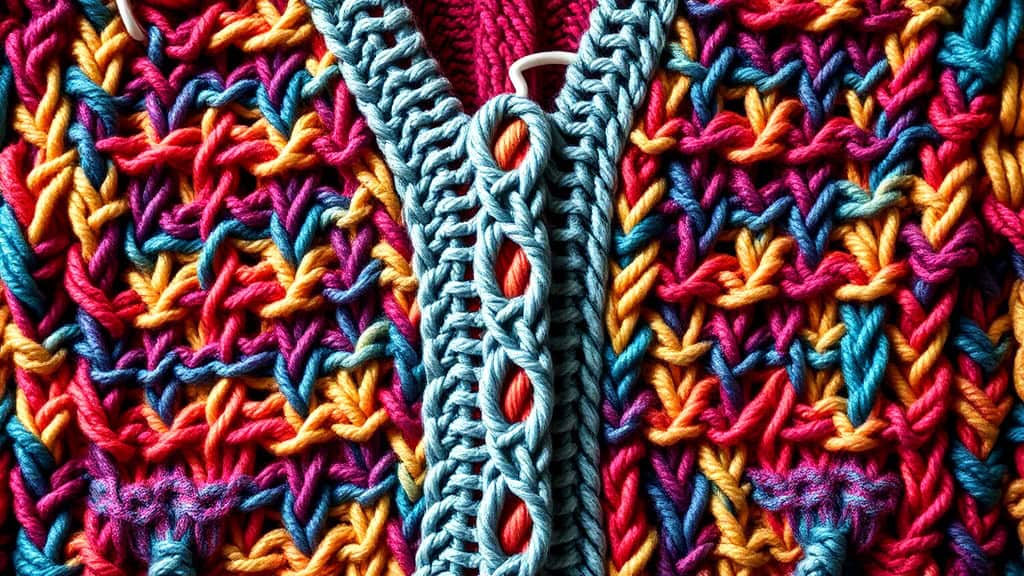
Pick Up Stitches Along The Edge
After completing your base triangles, the next step involves carefully picking up stitches along the edges. This will allow you to create the first tier of your entrelac blocks. Grab your circular needle and position it under the edge stitch. Pull the yarn through to create a new stitch.
Ensure you’re picking up stitches evenly. It’s easy to go too tight or too loose. A consistent tension will help your cardigan maintain its shape. Aim for every edge stitch to be picked up. This will provide a solid foundation for the next row.
You’ll want to keep your yarn smooth and untangled. A messy yarn can lead to uneven stitches and an unappealing finish. If needed, adjust your yarn ball’s position to avoid snags.
Once you’ve picked up the required number of stitches, proceed to knit across. This first tier will set the stage for the rest of your Entrelac Cardigan Knitting Patterns. Enjoy the rhythm of your knitting as the blocks begin to form.
This step is crucial for achieving that lovely woven effect that defines entrelac. Stay patient, and don’t rush. Your attention to detail will pay off in the final product. Happy knitting!
Knit The Side Triangles
To create those side triangles, focus on maintaining an even tension. Begin by picking up stitches along the edge of the base triangles. Each side triangle forms a connection to the next block, helping to shape your Entrelac Cardigan Knitting Patterns.
Ensure you count the stitches carefully. An accurate count keeps the triangles uniform and aesthetically pleasing. As you knit, remember to keep your yarn smooth and untangled to avoid any bumps in your stitching.
Knit the side triangles in the same fashion as the base triangles, moving from one edge to the other. This method creates a seamless look, blending the triangles into the overall design.
Once you’ve completed the side triangles, check for consistency in size and shape. This attention to detail makes a massive difference in the finished product.
Continue to follow your pattern, ensuring that each triangle is connected properly, forming a cohesive design.
| Step | Description | Tips | Notes |
|---|---|---|---|
| Pick Up Stitches | Start along the edges of base triangles | Count carefully to ensure uniformity | Use stitch markers if needed |
| Knit Side Triangles | Form the edges of the entrelac pattern | Keep tension consistent | Adjust yarn position as needed |
| Check Consistency | Ensure all triangles are even and aligned | Compare sizes visually | Rip back if necessary |
| Complete Pattern | Follow through until the desired length | Stay patient with the process | Enjoy the rhythm of knitting |
| Finish Assembly | Sew pieces together neatly | Use a tapestry needle for finishing | Check for any loose ends |
- Gather your materials.
- Pick up stitches carefully.
- Knit the side triangles with even tension.
- Ensure consistency in shape and size.
- Complete the pattern as instructed.
- Assemble the cardigan pieces.
- Weave in any loose ends.
- Enjoy your beautiful creation!
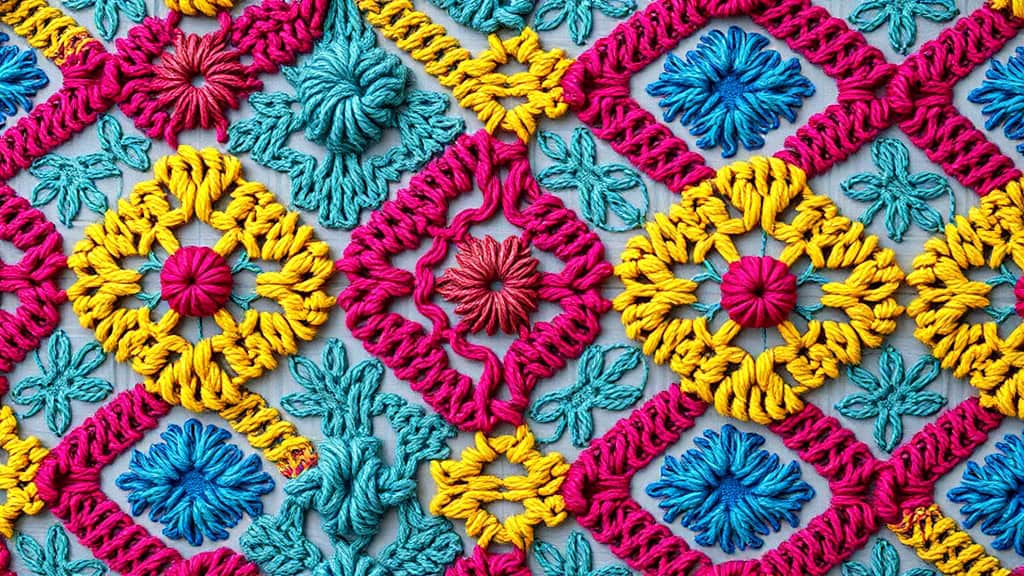
Repeat Until Desired Length
Keep knitting tiers until your cardigan reaches the length you want. As you progress, ensure each tier is consistent with the previous ones. This attention to detail is essential for achieving a polished look.
If you prefer a longer cardigan, don’t hesitate to add more rows. Just remember to follow the pattern’s stitch count for each tier. You might want to check periodically to ensure the fit is right. Trying it on can help you visualize the final look.
Consider using a different color or texture in the last few tiers for a unique finish. This can add a fun twist to the traditional entrelac cardigan knitting patterns.
Once you reach your desired length, you’ll be ready to tackle the sleeves. Each sleeve can mirror the body’s pattern, creating a cohesive design.
Don’t forget to secure all your stitches at the end. This will prevent any unraveling later on. Enjoy the process and take pride in creating something beautiful. Your patience and creativity will shine through in the final product. Happy knitting!
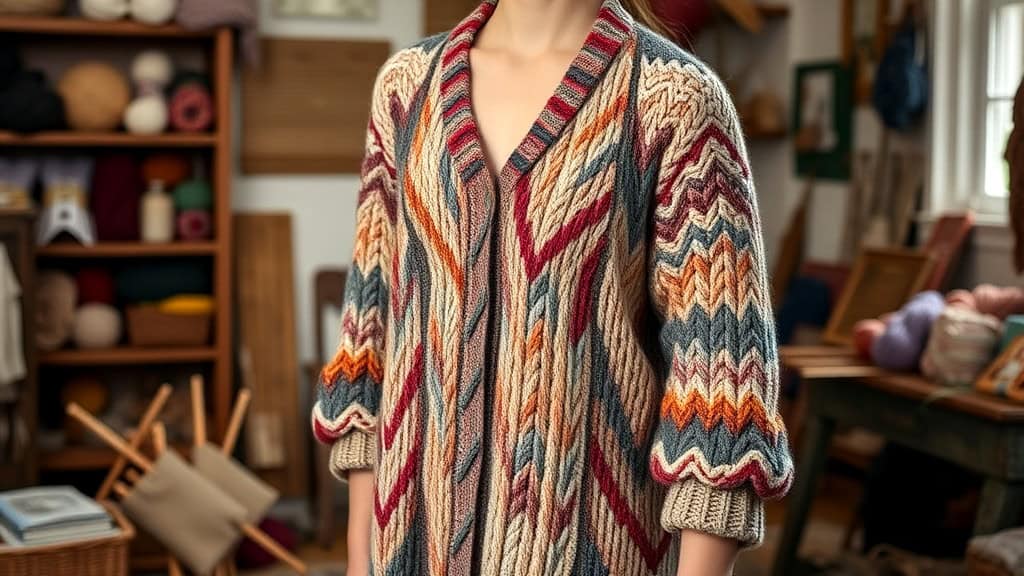
Knit The Sleeves
Creating the sleeves for your cardigan is a rewarding step. Begin by deciding the length and width. You can follow the same entrelac cardigan knitting patterns used for the body. This will ensure consistency throughout your piece.
Cast on the necessary stitches for each sleeve. You might find it helpful to use a circular needle to accommodate the number of stitches. Knit the first few rows in a simple stitch to create a solid foundation. Then, transition into the entrelac technique.
As you knit, keep an eye on the tension. Maintaining a consistent tension will help your sleeves fit properly. If you’re feeling adventurous, consider adding a contrasting color for the cuffs. This can make the sleeves pop.
After reaching the desired length, finish with a few rows of ribbing or garter stitch to add a polished look. Remember to bind off neatly to avoid loose edges.
Finally, block your sleeves to ensure they align perfectly with the body. This step will enhance the overall shape and texture of your cardigan. Enjoy the artistry involved in this project and let your creativity lead the way!
Sew The Pieces Together
Assembling your cardigan pieces is a crucial step. Begin by laying out all parts on a flat surface. This helps you visualize how they will come together.
Use a tapestry needle and yarn to stitch the pieces, ensuring a sturdy hold. Entrelac Cardigan Knitting Patterns often feature different textures, so take care to match them up for a seamless look.
Try using the mattress stitch for a nearly invisible seam. This technique is perfect for joining the sides and sleeves, resulting in a polished finish. Don’t forget to weave in any loose ends to tidy up your project.
To enhance stability, consider adding a few stitches along the seams. This can help prevent stretching over time. Once all pieces are joined, give your cardigan a gentle press with a steam iron. This step will set the seams and improve the overall shape.
Finally, try on the cardigan to ensure a comfortable fit. Adjust any areas as needed before wearing it out. Enjoy the satisfaction of wearing your handmade creation and showcasing your knitting skills!
Conclusion
Entrelac cardigans are a delightful way to showcase your knitting skills. With their unique textured appearance, they stand out in any wardrobe. The variety of patterns offers something for every knitter, whether you’re just starting or looking for a challenge.
As you embark on this knitting journey, remember to gather your materials and follow the instructions closely. Each step, from casting on to sewing the pieces together, is crucial for a successful project. Enjoy the process and let your creativity shine through. Happy knitting!
FAQ
- What is entrelac knitting?
Entrelac knitting is a technique that creates a unique, textured fabric. It forms interconnected blocks, giving a woven appearance. This look is achieved by knitting small blocks in a diagonal arrangement.
- What materials do I need for an entrelac cardigan?
You’ll need yarn, preferably wool or cotton, and circular knitting needles. Don’t forget stitch markers and a tapestry needle for finishing touches. The yarn weight and needle size can change how your cardigan feels.
- How do I read an entrelac knitting pattern?
Start by understanding common abbreviations like K (knit) and P (purl). Carefully follow the instructions, noting any repeats. Each step guides you through the knitting process for a successful project.
- What are the steps to knit an entrelac cardigan?
Begin by casting on stitches, then knit the base triangles. After that, pick up stitches along the edges. Continue with side triangles and repeat the process until you reach your desired length.
- How do I sew the pieces together for my cardigan?
After knitting, lay all pieces flat. Use a tapestry needle and yarn to sew edges together. Ensure everything aligns neatly for a polished finish.

